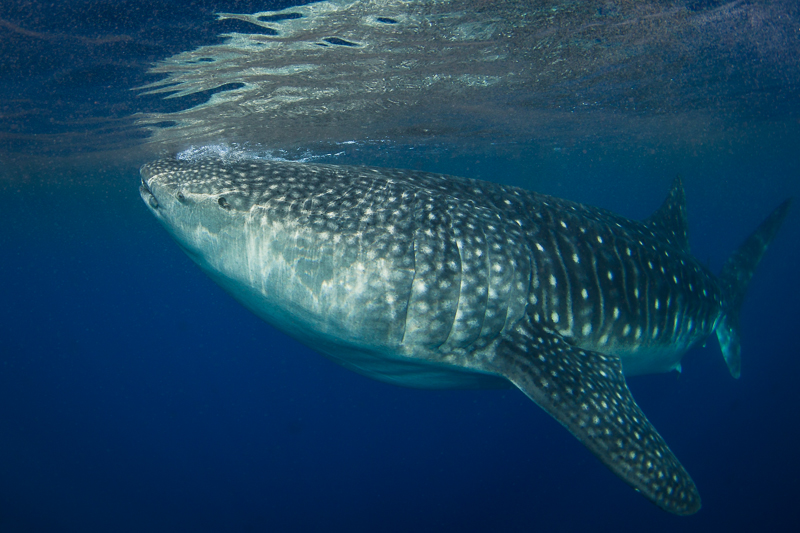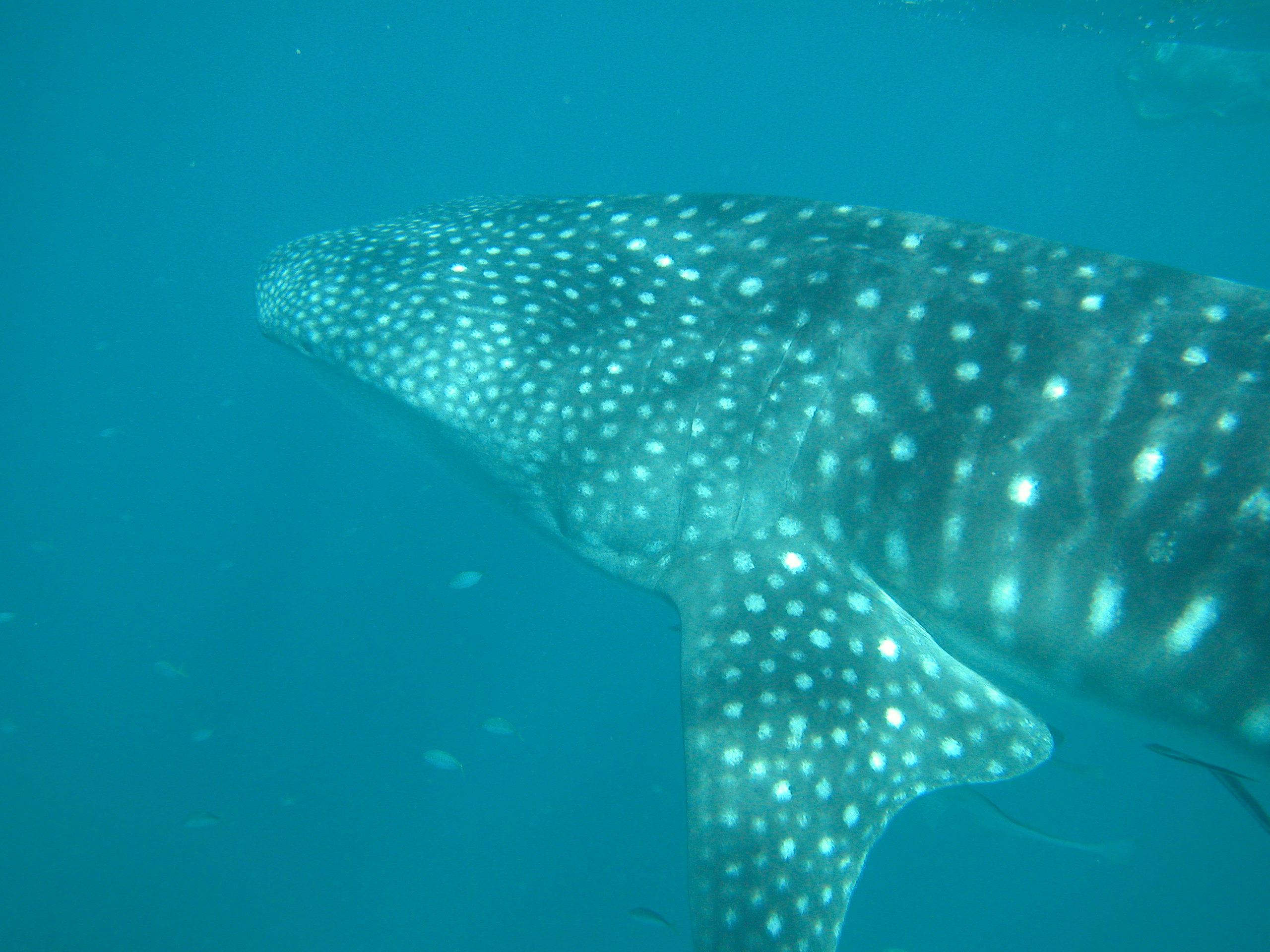Reproduction
There does not exist enough research to determine when a
whale shark becomes
sexually mature. Although some studies have been able to
suggest that it takes
thirty years until an individual is mature enough to reproduce.
Almost exclusively,
juveniles are found in regions such as coasts of Taiwan, the
Philippines, and India.
These areas are hypothesized to be significant to mating (Norman,
2004).
Rhincodon typus is a viviparous animal, although little
has been observed when it
comes to reproduction in these animals because of their solitary
lifestyle. Viviparous
means that an organism does not lay eggs, but rather offspring are
born within the
mother's body and out of egg capsules (Ritter, 2009). A female may
hold up to 300
embryos in the uterus, and it is possible that the embryos will be
at different stages
of development. This type of development is similar to that found in
the nurse shark,
where lecithotrophic embryos are also found in different stages and
are able to hatch
at different times. (Lecithrotropic, as defined by
encyclopedia.com, is
a mode of embryonic development in which the yolk of an egg provides
all of the
nourishment.) Through similarities between the whale shark and the
nurse shark
we can get a glimpse into reproduction of the whale shark.
Genetic research on R. typus embryos has shown that
up to all 300 offspring share
a father, indicating that a male shark can father an entire litter.
The different rates of
development and the single father suggests that females may only
need to mate once
and may store sperm from the single father (Joung, et all, 1996).
Successful taggings
of whale sharks reveal that females will return to their birthplace
to breed with the
single father, this is known as natal philopatry (Rowat and Brooks,
2012). While it
appears that females have one specific breeding place, they give
birth at different
times throughout the year.
Whale sharks are born at a size anywhere from 55 to 64
centimeters, but research
shows that R. typus has a higher growth rate during these early
years of life. Growth
gradually slows down once a specimen reaches maturity, which is
estimated at 30
years. When measured, growth rates are shown to be higher in pups
rather than in
juveniles, and females grow faster than males (Borrell, et all,
2011).
Continue learning? Go to the
Interactions page!
Return Home?


